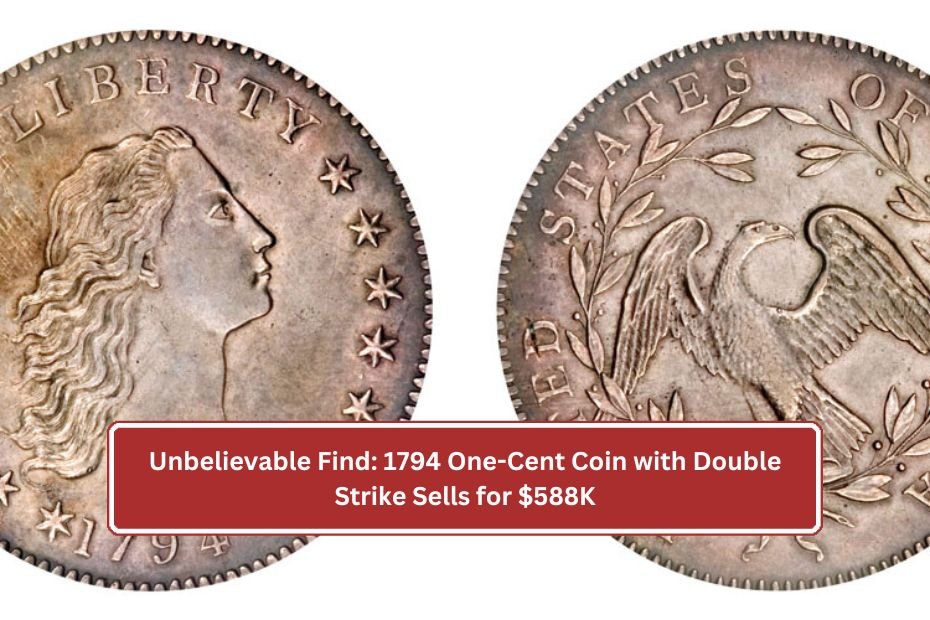You might have a rare coin hiding in your spare change that could be worth a fortune! Some coins are extremely valuable because of minting errors that went unnoticed when they were made. One such coin is the 1794 One-Cent Coin of 1794, which recently sold for a jaw-dropping $588,000. This article will explain what makes this coin so special, how to spot similar coins, and why some errors can increase their value.
What Makes the 1794 Coin Special?
The 1794 One-Cent coin is a remarkable find due to its significant error known as a “double strike.” This error happens when a coin is struck twice by the minting machine, resulting in overlapping images. The coin’s condition was graded by the Professional Coin Grading Service (PCGS) and received an MS66 rating, which indicates it is in almost perfect condition for its age.
The Design of the Coin
The front, or obverse side, features a beautiful depiction of Liberty, created by Robert Scot, the first chief engraver of the United States Mint. Liberty has flowing hair and gazes to the right.
On the reverse side, the words “UNITED STATES OF AMERICA” are shown at the top, with “ONE CENT” in the center, surrounded by branches.
Identifying the Double Strike
On this particular coin, the double strike is evident. Here are some features to look for:
- Obverse Side:
- Two Liberty heads appear on top of each other.
- A dye crack is visible in the lower right corner.
- The date “1794” shows faint doubling.
- Reverse Side:
- The dye crack is near the top.
- The text “UNITED STATES OF AMERICA” and “ONE CENT” are off-center.
Value and Auction History
The 1794 One-Cent coin recently sold for $588,000 at auction on August 14, 2024, due to its unique errors and excellent condition. Coin expert Fred Weinberg was impressed by the find, stating that it is a superb mint error with incredible condition.
Why You Should Keep Looking
Finding a coin like the 1794 One-Cent coin in your spare change is rare but not impossible. While coins from that era are unlikely to show up, there are other valuable coins that you might have without knowing it. For example:
- A rare 1920 penny can be worth as much as $26,000 because of an off-center rim error.
- A 1916 dime with “full bands” detail on the back could fetch around $18,000 from collectors.
Table: Rare Coins and Their Values
| Coin Type | Year | Error | Estimated Value |
|---|---|---|---|
| One-Cent Coin | 1794 | Double Strike | $588,000 |
| Penny | 1920 | Off-Center Rim | $26,000 |
| Dime | 1916 | Full Bands | $18,000 |
Conclusion
Valuable coins can turn up in surprising places. While coins like the 1794 One-Cent Head are rare, many other collectible coins can be worth hundreds or thousands of dollars. Keeping an eye out for specific features, like minting errors, can help you identify valuable coins in your collection. Always check your spare change, visit antique shops, or ask family members if they have any old coins. You never know when you might find a hidden treasure!
FAQ’s
What is a double strike error in coins?
A double strike error occurs when a coin is struck twice by the minting machine, causing overlapping images. This error can significantly increase a coin’s value.
How can I tell if my coin is valuable?
To determine if your coin is valuable, look for unique features such as minting errors, like off-center strikes or double strikes. Also, consider the coin’s condition and rarity.
Where can I find rare coins?
Rare coins can be found in your spare change, at antique shops, or through family collections. It’s always worth checking for older coins or those with minting errors.

